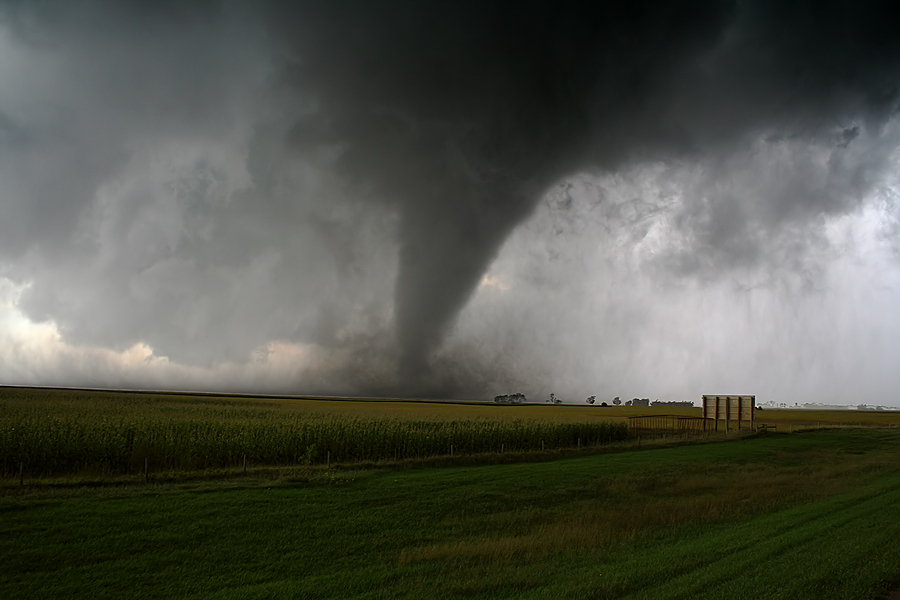As weather disasters strike with more frequency, U.S. homeowners first get hit with the destruction or total loss of property. Many are then hit with the unexpected loss of homeowners insurance policies as insurance companies re-evaluate their financial liabilities.
After a tornado ripped through Springfield, Massachusetts, last year, R. Paula Lazzari’s home was badly damaged. The retired teacher found broken windows, missing siding and a damaged roof. Her insurer offered to fund repairs for one broken window and some of the siding. It took nine months — and mediation services from an independent adjuster and the Massachusetts Division of Insurance — to get her bills paid, according to the parties involved.
In this era of unpredictable weather patterns, Lazzari’s case is not unique. Insurance companies are raising rates, cutting coverage, balking at some payouts and generally shifting more expense and liability to homeowners, according to reports from the industry and its critics.
“Insurance companies have significantly and methodically decreased their financial responsibility for weather catastrophes like hurricanes, tornadoes and floods in recent years,” the Consumer Federation of America said in a statement after studying industry data.
The industry concedes that it is trying to avoid getting trounced by those same punishing weather patterns.
“Last year (2011) was an extraordinary year for natural disasters,” said Michael Barry of the Insurance Information Institute (III), an industry trade group. “Insurers have taken a step back to assess whether or not they can absorb severe losses.”
STATES LEFT IN THE COLD
Some insurance companies have pulled out of weather-challenged states — meaning they will not write new homeowners policies and may not renew contracts with current policyholders.
In the wake of Hurricane Irene last summer, for example, Allstate informed some 45,000 North Carolina policyholders that it would not renew contracts that were not bundled with auto insurance.
After a spate of tornadoes last April caused $11 billion of property damage in Alabama, Alfa Mutual Group announced it would not renew 73,000 Alabama property insurance policies.
“The increased frequency and severity of storms over the last decade have highlighted the need for Alfa to review its overall property portfolio,” Alfa President Jerry Newby said in a statement.
Florida, where insurers have been dropping coverage since Hurricane Andrew in 1992, is a good example of where this can lead. With an annual average of $1,460 per home, homeowners’ premiums there are second-highest in the country (Texas, at $1,511, is first), according to the most recent data available, a 2010 report from the Insurance Information Institute.
“Florida’s off the charts when it comes to pricing,” said Mike McCartin, an Ashton, Maryland, independent insurance agent.
The state has stepped in to cover some 1.5 million properties via its publicly funded Citizens Property and Insurance Corp. as insurers drop more and more homes.
“You simply have major private insurers that are unwilling to write policies in Florida,” said Robin Westcott, the state’s insurance consumer advocate.
“It’s just a tough market to be in,” said Phil Supple, a spokesman for State Farm, which was once Florida’s largest property insurer. It stopped writing new homeowners’ policies there in 2007.
CHERRY-PICKING OF CUSTOMERS
Even though companies are not abandoning states at will, many opt to drop coverage on individual homes or customers that may seem prone to file claims. Insurers generally work on three-year contracts with homeowners, Barry said. At the end of those contracts, insurers can decide to raise rates or not renew.
When frozen pipes caused flooding in Phil Berger’s Ijamsville, Maryland, home last year, he got a $6,000 check from Allstate for the damages — and a policy review. Berger said an Allstate contractor told him to make $100,000 in repairs to his home at his expense or he would lose his coverage. He refused, and instead found a less expensive policy with a company that required only one smaller repair before covering the home.
“You just need to be on your toes at all times,” Berger said.
Allstate declined to comment on Berger’s case, but sent an email response to general questions about the company’s non-renewal policies.
“Allstate responsibly manages its risk by opting to not renew policies as warranted,” company representative Kevin Smith wrote. “These actions are carefully considered, and help ensure Allstate’s continued ability to provide a wide variety of insurance products to consumers at a competitive rate, while remaining financially strong in every community we serve.”
PAYING MORE FOR LESS
Even homeowners that renew every year may find new limits buried in their policies. The Consumer Federation report said insurance companies have “sharply hollowed out the catastrophe coverage offered to consumers” by raising deductibles, capping replacement costs, and — significant for folks in the path of tornadoes and hurricanes — removing coverage for wind damage if another non-covered event (usually a flood) also occurs.
Industry groups say this misstates the facts.
“The (CFA) could not be more wrong,” said Dr. Robert P. Hartwig, president of the Insurance Information Institute. “Cities such as Tuscaloosa, Birmingham and others are being rebuilt today because of private insurance companies paying losses — not from ‘hollowed out coverage’ policies.” Insurers have paid “literally billions” of dollars to “hundreds of thousands of claimants” affected by natural disasters, he said.
Hartwig also defended the practice by some insurance companies of leaving certain states or regions.
“If you tell an insurance company that they can’t raise rates despite nine hurricanes in two years, obviously insurers are going to have to reduce exposure,” he said.
But homeowners’ insurance premiums have been rising. They have increased an average 6.33 percent annually between 2002 and 2009, according to the National Association of Insurance Commissioners (NAIC). This year, insurers have asked for rate increases of 18 percent or more in 11 states, according to the Consumer Federation.
Robert Hunter, the author of the consumer report, has questioned whether limit-laden policies are worth the rising costs. But mortgage lenders require homeowners insurance, and anyone who has observed a devastating house fire or storm is unlikely to be willing to go without coverage.
COMPARISON SHOPPING
So how can consumers, who have little choice but to keep their coverage, do as Berger suggests and keep on their toes?
Hunter tells homeowners to shop carefully. “Go on your state’s insurance policy website and look for houses similar to yours to compare prices,” he said.
The NAIC provides a map to all state insurance regulatory offices on its website, and provides information about consumer insurance complaints.
Hunter also recommends checking comparison websites such as insuranceproviders.com— or insweb.com — for companies with favorable consumer reviews for in your state.
Another step is to get a professional agent to help, said Jim Donelon, Louisiana’s insurance commissioner and president-elect of the NAIC.
“I recommend you talk to as many people as you can. Get an independent agent — someone who’s not attached to a specific company — and get in touch with captive agents but know that captive agents can only represent their company.”
The agents can check to make sure no important coverage — like wind — has been carved out of the policy.
Compare what the agents offer with what you can find online, said Randy Moses, South Dakota’s insurance commissioner.
Even after getting coverage, consumers may find they need extra help. Lazzari needed both an independent broker and a public adjuster to resolve her case. Her insurer, Norfolk & Dedham Insurance, not only initially refused to pay for most of her home repairs, but also planned to drop her as a customer, she said.
Francis T. Hegarty Jr., president and CEO of Norfolk & Dedham Group, confirmed her version of events, but said it was not unusual for claims such as Lazzari’s to take time to resolve.
Lazzari contacted an independent broker who worked with Norfolk & Dedham to successfully complete her home repairs. But the broker said switching insurers would increase her payments 185 percent. That’s when Lazzari contacted the Massachusetts Division of Insurance to find a public adjuster, who eventually persuaded Norfolk & Dedham to keep her on its rolls.
“We were eventually able to work things out with Ms. Lazzari,” said Hegarty. “In these kinds of cases with independent adjusters, the claims tend to get strung out and tend to take longer to resolve than they would otherwise. But cases like this case are pretty common and, all in all, we’re pleased with how things turned out with her.”
Topics Catastrophe Carriers Agencies Florida Hurricane Property Homeowners Massachusetts
Was this article valuable?
Here are more articles you may enjoy.



 Business Moves: ALKEME Expands in US With Addition of 5 Agencies
Business Moves: ALKEME Expands in US With Addition of 5 Agencies  Consumer Acceptance of Telematics Widens, Says Survey
Consumer Acceptance of Telematics Widens, Says Survey  DoorDash, Uber Cost Drivers $550 Million in Tips, NYC Says
DoorDash, Uber Cost Drivers $550 Million in Tips, NYC Says  Expense Ratio Analysis: AI, Remote Work Drive Better P/C Insurer Results
Expense Ratio Analysis: AI, Remote Work Drive Better P/C Insurer Results 

